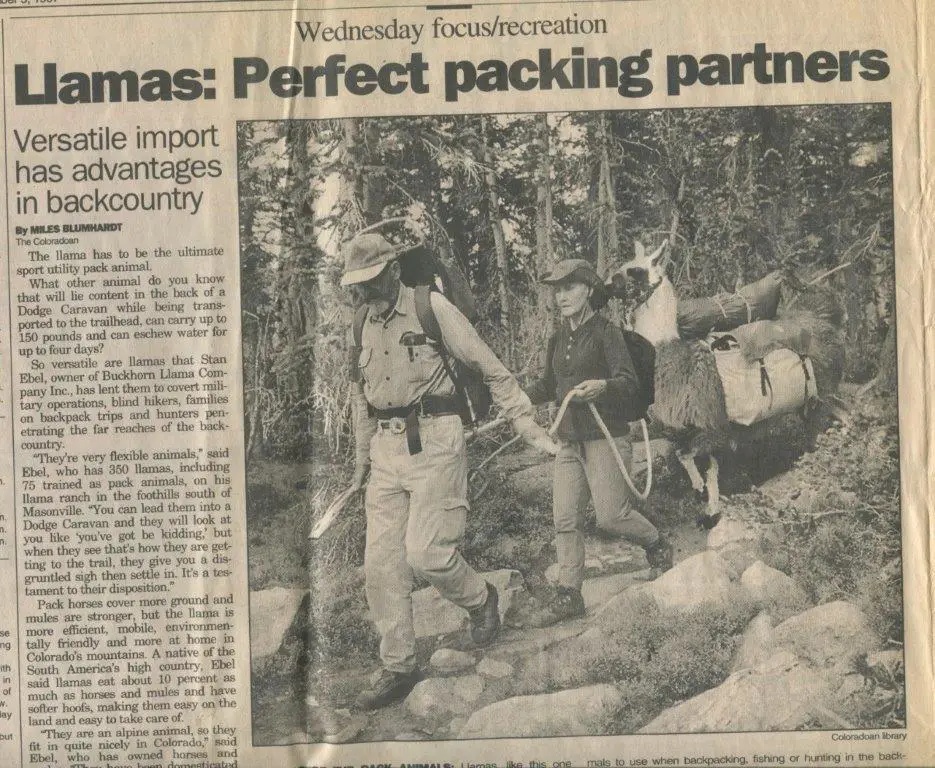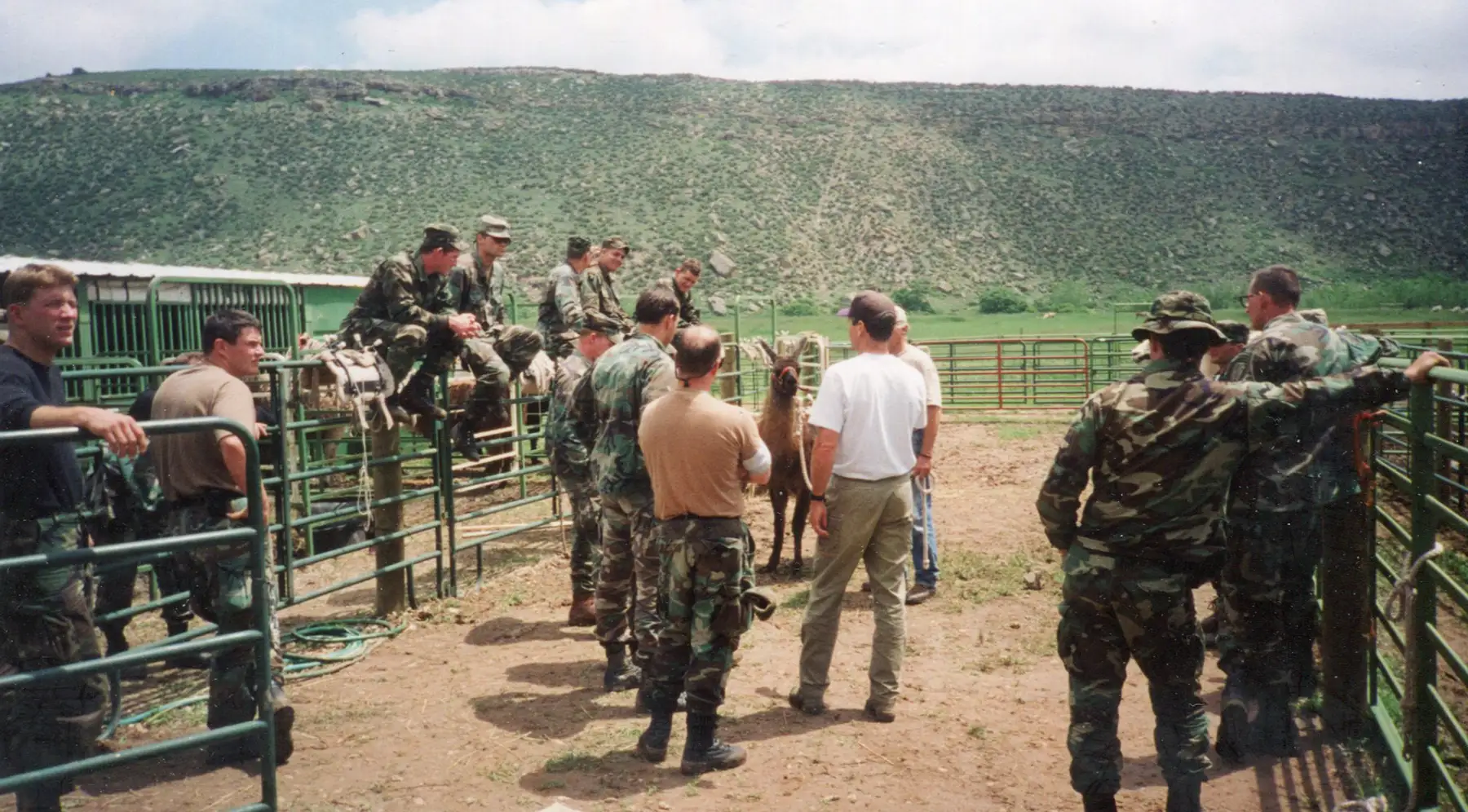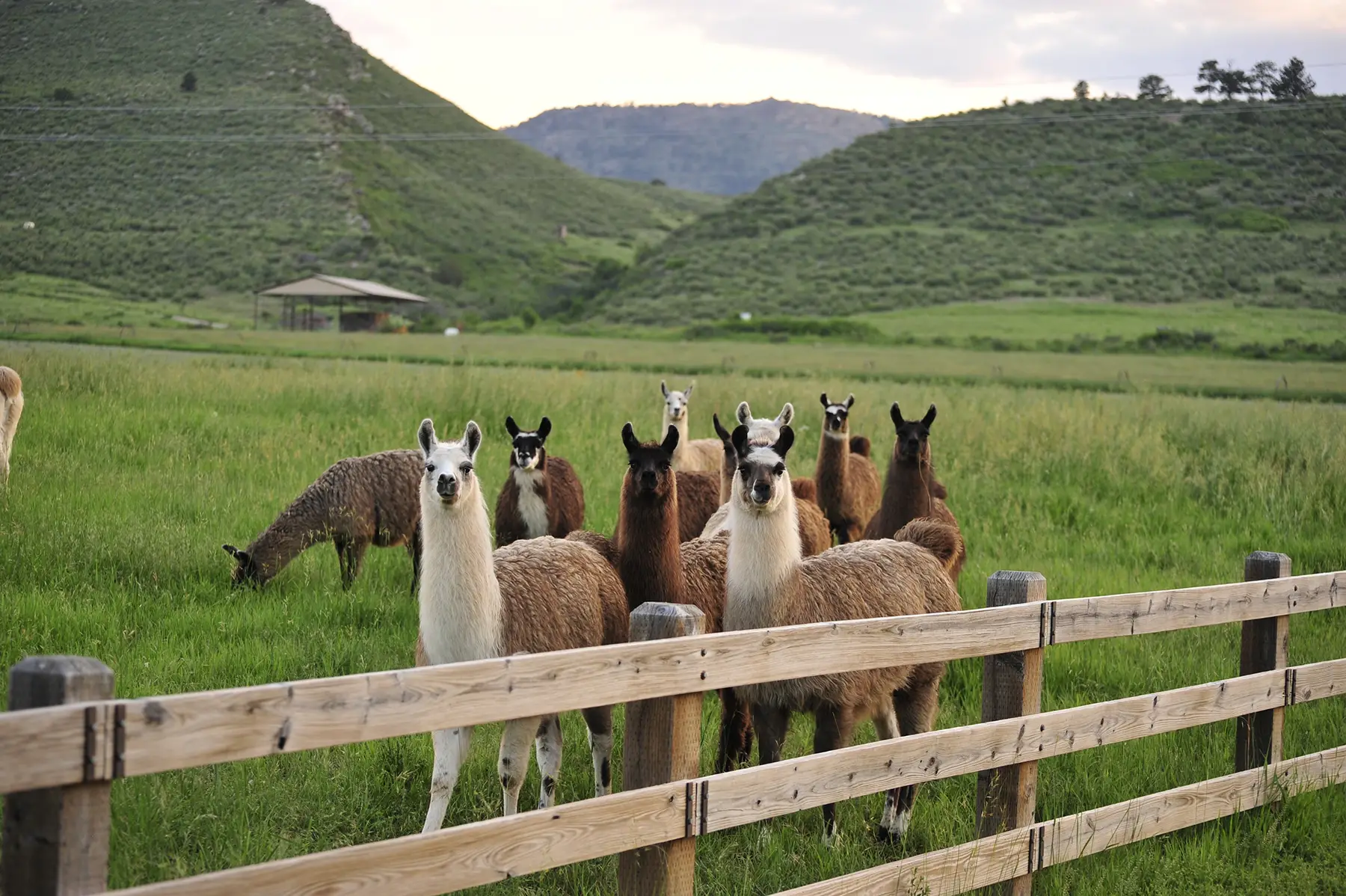Llamas take Blind Hikers into the Wilderness for 5 Day Trips
In 1982, Buckhorn Llama Company began leasing pack llamas to the USFS for trail crew support on what is now the Canyon Lakes Ranger District. Each season, trail crews would take 2-4 llamas on projects to support their trail building and maintenance operations.
The district began using volunteer crew members in the late 80’s and two of those volunteers were retirees, Chuck Bell and Art Bunn. They volunteered for trail work in the summer and in the winter, they worked with Ski for Light, a program that helped blind people experience snow skiing. They were very impressed with the abilities and enthusiasm of the blind skiers they worked with and recognized the potential to use llamas to support blind hikers on a summer wilderness experience.
Chuck and Art had worked with our llamas extensively on trail projects and recognized their abilities and versatility. They approached me with a plan to provide wilderness pack trips for blind hikers, each one teamed with a sighted guide and a pack llama. They dubbed the program Trek for Light. Having worked with Ski for Light’s enthusiastic volunteer instructors, they felt that same spirit could be generated in volunteer trail guides by offering them an opportunity to use llamas and simultaneously provide a unique experience for blind people.
Their plan was to spend a week orienting their participants, sighted and blind, regarding traveling and camping in the wilderness. The instruction would be capped with Buckhorn providing a one-day orientation focusing on the dynamics of a two-person, sighted/blind partnership with a llama carrying their camp. Initially, I was skeptical, but they presented a well-conceived plan reflecting their experience with the blind, the wilderness, and llamas. We had a history of finding the limits with llamas by exceeding them and moved in that spirit.
My main concern was that the blind hikers would be totally dependent on a tactile association with the llama. This conflicted with llamas’ territorial nature dictating separation and contact avoidance. The blind could not read the visual cues and posturing the llamas use to communicate their predictable discomfort with territorial invasion and touching. We agreed the sighted guide would be primary in handling the llama and the blind hiker would participate as appropriate.
The first orientation was eye opening (pun intended) for me. The blind hikers were not about to let their guides take the lead working with the llamas. This was their experience. They worked confidently from the information their fingers fed them and the llamas were amazingly calm. The llamas seemed to sense their handlers’ resolve and confidence. The blind hikers’ ability to listen, retain, and apply information was obvious and exceeded what I encountered in our typical orientation. I pivoted to specifically addressing the blind hiker and having the sighted guide audit and support where appropriate. I felt confident blind hikers could be equal participants, if not the lead, in many aspects of the team concept.
The day after the instruction, we started our adventure at three trailheads on the Laramie River. The river valley has a selection of trailheads leading into the Rawah Wilderness. Several circuit routes of 30-40 miles with occasional intersections offered the perfect combination of group separation with occasional contact. I dropped 4 teams (4 blind/4 sighted/4 llamas) at each of 3 trailheads and the teams began packing their llamas as I moved to the next drop. At the third and last trailhead I assisted the group to get rigged and moving toward their first camp. I assumed as I retraced my route to the earlier drops, I would need to do some troubleshooting at those trailheads. Not so! The second group was departing as I arrived and when I came to the first trailhead, the group was already out of sight. Nothing left for me to do but go home.

5 days later, I showed up at the trailheads at the agreed pickup time and all the counts reconciled. 12 llamas, 12 guides, and 12 ecstatic blind hikers. They thanked me profusely for everything Buckhorn had done. They had truly “seen” and experienced the wilderness. I was surprised, as I really didn’t feel like we had done anything out of the ordinary. I had failed to realize how transformational the trip could be.
Chuck and Art’s organization, preparatory instruction, and recruitment of competent guides laid a foundation for a great experience. However, as I have noted in our many previous ventures, success rode on the backs of the llamas. You can dependably “Trust the Llama”. Their competence and intuition paired with the enthusiasm and determination of their companions, sighted and blind, produced a very unique adventure.
This first of 10 Trek for Light llama pack trips took place in 1994. Chuck and Art retired a second time in 2004 and without successors, the program ended. Buckhorn treasured their role in helping to provide a transformational experience for these groups, but it was apparent the program was a business venture in itself and beyond our capability. We are grateful to Chuck and Art for their vision and for including Buckhorn and our llamas in it. I’m sure there are 200+ hikers, sighted and blind, that are even more thankful.

